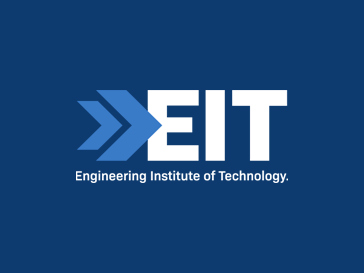Dear Colleagues
Last week, I sighed in horror when I walked into a noisy hot industrial chemical plant and spotted the office-type commercial Ethernet hardware being used (with those weak RJ-45 connectors). Sure – you spend less money and get freely available off-the-shelf components, but you may get more problems than you bargained for. Admittedly this network is apparently still operating happily despite huge vibration, heating, power supply and moisture issues. But the risk is high that you will shortly be faced with public enemy no.1 for data communications - intermittent comms drop outs which are difficult to trace and fix. Industrial Ethernet costs a bit more but gives you a sure-fire assurance of performance.
Ethernet is apparently growing at the rate of 30% per year and is generally the preferred approach these days for industry. Once limited to office type networks, it is extensively used in the industrial industry but one needs to ensure that the industrial Ethernet variety is used with industrial type connectors and equipment rated for industrial temperature ranges, power supply fluctuations, high vibration and moisture ranges.
The good old Seven layer model
As you are probably aware, every communications system is based around the 7 layer OSI Model (Layer 1 - hardware e.g. copper connections/ Layer 2 - Data Link Layer – raw Ethernet frame / Layer 3 - Network Layer – for routing the packets using the IP address / Layer 4 – Transport – for assuring delivery of the packets / Layer 5 – Session / Layer 6 - Presentation / Layer 7 - Application Layer – e.g. http or ftp or Modbus/TCP)
Getting into the Hardware
The range of Ethernet at the hardware layer is from 10Base-T (10Mbit/s), 100Base-T (100Mbit/s), to 1 Gigabit/s and now 10 Gigabit/s Ethernet. And as my good colleague – Simon Lucchini at Fluor, noted – make sure your ‘Ethernet run in the field is mainly fibre; copper Ethernet is only used within the equipment rooms. It is very common to have very substantial fibre infrastructure run between instrument equipment rooms (dual 240 core cables)’. Fibre provides optical isolation and immunity from electrical interference.
Switching (you through) at Layer 2
Use industrially hardened switches – generally full duplex switches are the preferred approach. A switch (as opposed to the older hub technology) provides a dedicated segment for every Ethernet node. Ensure the power supplies for the switches are redundant or at least can handle ranges in the supply voltage.
Open Protocols and the Application Layer wars
As far as the other protocols are concerned, use of TCP/IP is a wonderfully open protocol - common to both commercial and industrial systems. IP provides you with routing capability (using the IP addressing) and TCP assures delivery of packets. There are some real time issues with TCP so one can also use UDP for transfer of non-critical repetitive data such as video.
Besides the choice of industrial Ethernet and TCP/IP where things are relatively straightforward - there are still some challenges with battles being fought at the Application layer with different vendors providing similar Ethernet solutions but with different application layer protocols which are incompatible. These offerings include: Modbus/TCP, PROFInet, Foundation Fieldbus HSE, Ethernet/IP which are not directly compatible.
Other necessary elements for your industrial Ethernet system
The other critical elements to consider are network security and network management. Every computer cracker in town wants to get into your network and you need a strong security architecture with workable firewalls and possibly VLANs (a group of devices on different networks that communicate with each other as if they are on the same secure network). Network management is growing in importance in industrial networks and allows you to monitor and maintain a network with useful statistics (e.g. packets lost / traffic intensity on a segment).
Although the various design issues in putting together a robust industrial Ethernet network perhaps seem enormous (esp. in troubleshooting data communications problems), as Benjamin Franklin remarked: Energy and persistence conquer all things.
Yours in engineering learning
Steve
